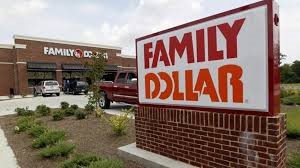Farewell Family Dollar

Family Dollars across the nation are in the process of being foreclosed.
April 9, 2019
The Dollar Tree franchise has recently purchased their competing company, the Family Dollar. The discount chain has stated that it will redact as many as 390 Family Dollar and Dollar Tree stores throughout the year, changing the names of almost 200 more, and has begun testing store charges of more than a dollar in some of its chains.
The announcement was released as Dollar Tree reported its end of year profits. Dollar Tree purchased its rival, the Family Dollar, for $9.2 billion in 2015. Despite this, the brand has been firm. Family Dollar stores will be chosen to close, depending on its parent company’s ability to receive rent profits from their landlords. The branch has already closed 84 underperforming chains in their final quarter, which was 37 more than necessary to finalize the closings for the previous year. Despite the shutdowns, Dollar Tree has decided to rebrand nearly 200 local Family Dollar stores with their own name. Representatives from the Family Dollar finances branch have reported similar quarterly results before, as well as after the markets had opened, but the actual earnings were disappointing post-rebrandings.
Regardless, the Family Dollar is not the only company brand going through changes.
The Dollar Tree CEO, Gary Philbin, has mentioned plans to sell items that cost more than the standard dollar at its most profitable chains. This change has been reportedly pushed by investors and company management. Dollar Tree has tested such price changes previously but Philbin stated no details regarding the locations where the tests will take place.
This will mark a major change for the brand, which has traditionally used one dollar as its main price point, while Family Dollar sold not only $1 items but also products that cost more. The clash of the new prices and branding is expected to reel in major profit benefits for the company. Because of their new acquisition, Dollar Tree believes that it now has the expertise to increase prices at its profitable stores, yet it is still a risky proposition. Moving away from the brand equity of a single dollar may present a significant risk to the company, and on a long-term basis, the Dollar Tree could end up as just another store. At the time of their acquisition, they still have a unique branding ideology. Despite this, short-term testing with higher prices could prove helpful and would raise the company’s profits, which is important because the company faces pressure from rising labor and import costs. The plan is set to redeem the sluggish performance of the Family Dollar before the acquisition by its new parent company.
Many investors and backers of both the Dollar Tree and the Family Dollar believe it is a sensible move that will provide the company with significant flexibility to deal with cost inflation. While some shoppers may initially stray away from the longer term “testing,” backers see no real reason why this move cannot work, especially given that it is employed by the Dollar General, as well as a number of other valuable chains.
The chain also wants to boost profits by shutting down stores, a move that could also create leverage when negotiating with its landlords. Dollar Tree still plans on investing in its Family Dollar acquisition;, however, the renovation of at least 1,000 stores this year has proven costly. The cost to remodel a store ranges from $100,000 to $150,000, meaning millions of dollars worth of renovation is needed to profit out of the recent accession.
Overall, the finalization of the Family Dollar purchase has proven both beneficial and demeaning for the Dollar Tree brand. The recent experimentation and fluctuation of prices at their more profitable stores will result in a valuable brand image for the chain in the long run. Trying to maintain their traditional marketing ideology has proven difficult with the recent acquisition and changes, but with the closing and rebranding of some stores, Dollar Tree may have enough resources to maintain a profit.


